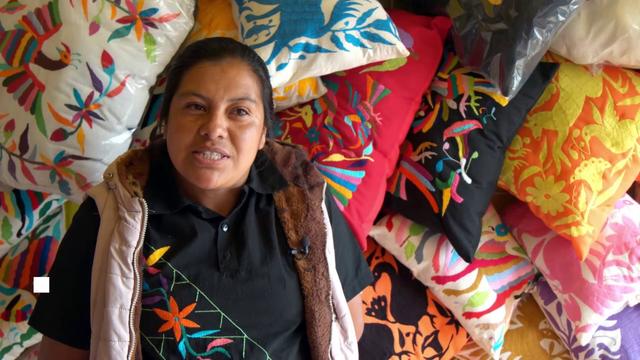Tenenago artisans finally have the tools to defend their work of the multiple plagiars they have suffered in recent months: they constituted a ‘collective brand’ with an economic support granted by the Undersecretariat of Social Participation and Artisanal Development of Hidalgo.But we go in parts: What is a collective brand and why a ‘special’ figure is needed to defend an artisanal process?
A craft, no matter how much you do it, it is not yours: it is from your community
A craft, contrary to how they taught you in prepa, it is not something ‘lower’ than art: it is a technique and, like any other technique, it is taught and apprehended in society and in community.You need teachers and materials, forms and uses to know how to shape a clay pot, what to embroider in a blanket or the colors and designs that are valid (and those that are not).
Therefore, traditional copyright and industrial rules did not apply to protect the crafts from plagiarism: it is not possible (or viable) to register each shirt, each cup, each shoe, but the process and the social and custom conditionsin which they are framed.

The first victory for the indigenous communities that registered this type of brands was the trial that the community of Santa María Tlahuitoltepec, Oaxaca, when they demanded the French designer Isabel Marath for Plagio.
Although the figure of the collective brand is relatively new (around 2014 was presented by the Mexican Institute of Industrial Property, IMPI), it has already been used several times not only to protect from plagiarism a particular craft, but to preserve formsof expression and, therefore, of being of indigenous communities of Mexico and Latin America:
Isabel Marath's plagiarism to Mixe Community in Oaxaca (Image: Special)
How ‘collective brand’ works to defend indigenous work?
The vast majority of Mexican ‘traditional’ crafts are elaborated by indigenous or by precarious communities.The case of Tenango embroidery is not different: there are more than 40 municipalities (Ajá, not only Tenango) and the embroiderers' guild includes more than eight thousand and one hundred members.
His designs, or ‘creative and free adaptations’ (that is: passed through some adobe program), have been used by brands such as mango, Nestlé and even the youtuber yuya makeup line.Without a collective brand or mechanisms to defend their traditions, they could do more than lead to networks or through formal letters to companies their complaints.
Now, with the endorsement and support of institutions such as IMPI, they can already demand, negotiate royalties with plagiarists or even demand that the product be stopped in litigation.
Mango Plagia in an Otomi embroidery sweater of the Tenango community
We talked with the Undersecretariat of Social Participation and Artisanal Development, where they told us that, first, the community and 25 thousand pesos were advised for the constitution of the legal figure.The process is quite simple, but it implies compliance with a list of requirements: from finished product descriptions and the techniques used to the traditional uses of these.(Via: El Universal)
The only problem ... is that it took a little less than four years ... In October 2014, the then governor of the State, José Francisco Olvera Ruiz, signed together with the IMHe definitely endorsed.(Via: The Independent of Hidalgo)
Tenango artisans demand Nestlé against PGR for alleged plagiarism
There is not a single property, there is not a single way of thinking about the same, nor is there a single way of demanding the rights and recognition of all.Now, how long will it take to report another case of plagiarism?
Basic Tips on How to Take Good Care of Your Feet
6 Items to Help You Start the Journey of Losing Weight
How to Save Money on Your Seaside Trip: Clever Tips for a Frugal Vacation That Won't Sacrifice Fun
Lil Nas X's Unofficial 'Satan' Nikes Containing Human Blood Sell Out In Less Than A Minute